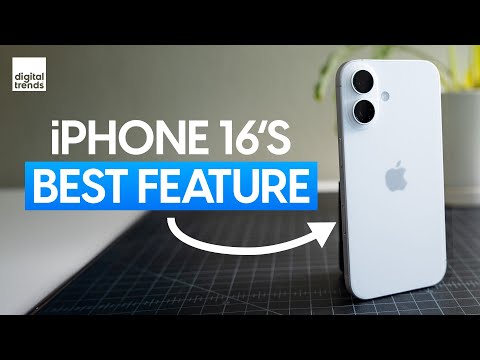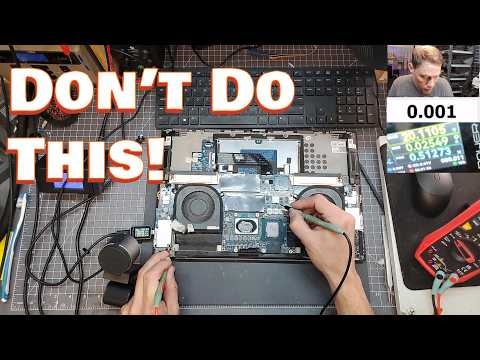Camera Control | Apple's Best iPhone Feature in Years

A portion of this video is sponsored by Xfinity Mobile. It's a perennial question now, right? Are the new iPhones going to put conventional cameras out of business? A strong take—let's talk about that. [Music] Welcome back, everyone. I'm Caleb Dennison here with Chris Hagen, and as you all know, I was at Apple Park for the iPhone, Apple Watch, and AirPods event. In my video from Apple Park, which was mostly about the AirPods (that's why I was there), I made a passing comment about how excited I was by some of the new camera and video features coming to the new iPhones.
Yeah, I mean, I remember you said as much during the keynote and in our team’s chat, and we've all been pretty excited to test out the iPhone 16 ever since we got one in. Yeah, totally. And here's the thing: as a consumer and a creator myself, I'm excited at the idea of what the new iPhone puts in the hands of consumers, and I'm especially excited about what it can do for creators as well. That's just me being
an excited consumer and iPhone user, right? But at the end of the day, Chris, you are the one who's the ace photographer and videographer here, so in this video, I want everyone to hear from you about how the iPhone 16 and iPhone 16 Pro stack up for more advanced prosumer use. Yeah, and really, there is a lot to talk about when it comes to what you can do with these camera systems. Right. So I'm going to let you get into it, Chris, but first,
before we do that, a quick word from our sponsor, Xfinity Mobile. Hey, everyone! I've got an incredible Xfinity Mobile deal that you won’t want to miss. Now through January 10, Xfinity Internet customers can take advantage of an amazing buy-one-get-one offer on unlimited lines. Right now, if you purchase one unlimited line, you’ll get an additional unlimited line free for an entire year. Now is the perfect time to join the millions who have already switched to Xfinity Mobile. With this incredible offer, you’ll not only save on your monthly bill, but also gain exclusive access to the most powerful mobile Wi-Fi network, giving you fast Wi-Fi speeds of up to a gig on the go in millions of locations nationwide. Don’t miss out on this opportunity to experience the unmatched performance and value
that only Xfinity Mobile can provide. We’ve got all the details down below, including a direct link to this amazing offer. Visit xfinitymobile.com to learn more and switch today. Big thanks to Xfinity Mobile for sponsoring this portion of our video. Creators love to tell you that the best camera is the one you have available right now. But
it's a lot easier to say that when you've got a high-end mirrorless camera in your hand. When it comes to the iPhone—especially the latest batch of iPhone 16 models—it’s true. If the iPhone is the best you’ve got to work with, you’ve got more than enough to put out high-quality content. And as Caleb and I alluded to in the intro, while we do most of our filming here on Sony cinema cameras, with every year that passes, smartphones—especially the iPhone—close the gap just a little bit more in terms of ease of use and quality. Now, before you go after me in the comments, no, this is not a video directly comparing Sony’s full-frame cameras to the iPhone 16. We should all be well aware that they are in completely different ballparks when it comes to shooting experience, features, lens, and camera control. More on that in a moment.
What we will discuss in this video is how the iPhone 16, especially its added camera features, covers everyone—from the casual user capturing everyday moments to the aspiring photographer or video creator who wants to start creating for social media, including long-form YouTube content. And just maybe, maybe I can make you think twice before buying a real dedicated camera, because the iPhone could be a better option. Let’s start right there. And let me also acknowledge that, if you know me, suggesting an iPhone instead of a real camera sounds crazy. For context, I’m big into photography and filmmaking. I own several cameras across the Sony and Fujifilm lineup. I love creating for myself, and I consume a ton of YouTube content around those subjects as well—so much so that when I watch a video, for better or worse, I make my first judgment based on video quality. Is it
in focus? How’s the lighting? Exposure? How are the colors? What camera did they shoot this on? How’s the footage look from this camera or lens review that I’m watching? All the things that really do matter when I’m often looking at gear reviews or videos around image quality. But then I became a dad, and some of my viewing habits shifted toward car seat and stroller reviews, what’s the best high chair, and how to do anything baby-related. And as I’m watching those videos, you know what? I’m not worried about cinematic quality. Most of those videos look like, well, you know, they kind of look like this—they look like someone filming on an iPhone. And I’m sure, to their primary audience, that is more than
okay. It’s just fine. If I can clearly hear what’s being explained and see well enough, the rest isn’t quite as important, so long as I’m learning what I need to. Then I look at the views, subscribers, and the comments of all of us new parents who genuinely appreciate the help, and I think to myself, you know what? Who cares what this video was filmed on? It absolutely does not need to be an expensive camera rig, especially when the messaging in the video lands its point. Enter the iPhone 16. It’s not an expensive camera rig, but it does give tons of tools to get the job done with both photo and video. And in the right scenario,
sometimes your viewer may not even be able to tell that your content was captured on a smartphone. Let’s take a look at what the iPhone 16 offers that makes it a worthy choice for photo and video. You’ve got 48 megapixels on the main camera—more than enough for any cropping in on the photo, or even printing a photo. Macro photography is also available on the non-Pro models, in addition to the ultrawide and 2x telephoto options. And there are all the features you’re used to, like portrait mode and night mode.
On the video side, again, you’re well taken care of with 4K recording up to 60 frames per second. You’ve also got cinematic mode—think of it as portrait mode, but for video. The iPhone creates an artificial background blur that gives the appearance of a cinematic shallow depth of field. It can be a nice way to elevate your video quality,
but it can also look a bit too artificial sometimes, just my opinion. With the iPhone 16, you can also create time lapses, shoot in slow motion, and much more. And I say “much more” because, seriously, there are a ton of options. I listed a bunch of them just now, but I would consider those just the basics. And as I would with any camera, I highly recommend diving into the settings and toying around with all of the options. You’ll want to learn at least
a little bit about using high-efficiency files or the most compatible files, depending on your workflow and where you’ll be sending photos or videos for editing or posting. Point being, everything I just mentioned is plenty to start creating. Sure, if you go looking for a bigger camera setup with a nice lens and all the features that come with it, you’ll find a lot of great options. But consider your audience and your wallet. If you don’t have
the audience that’s going to pixel-peep your content, or if your content isn’t dependent on a specific visual aesthetic, will anyone even notice or care what you’re shooting with? If the answer is no, you may already have the answer with the iPhone in your pocket. And if you’re looking to upgrade, it’s much easier to do so with a phone than a camera. After all, the phone can also act as your wallet, your house or car key, calendar, and a lot more. So now that we’ve gone over the basics, there are a couple of places where the iPhone 16 significantly upgraded to make it more usable for someone who wants to go beyond just using it as a point-and-shoot camera. We
have to start with camera control—the most talked-about added feature to this year’s iPhone lineup—probably because it’s added to all of the new models, not just the Pro lineup. It has a lot of features crammed into it, starting with the ability to press it and immediately open up the camera app. It’s super fast, but if you think it’s too fast, no worries. Within the settings, you can change this to a double press instead. That way, you’re less likely to accidentally open the camera app when you pick up the phone, especially if you’re left-handed. Once the camera app is open, the button really starts to flex its muscle. A full press down takes a photo. A full press down and hold starts recording
video—both great options for capturing quickly on the go, but there's much more functionality beyond just capturing with a single button. You can change so many settings that have a huge impact on your final image. With a half-press, you've now got access to exposure, depth, zoom, the camera options (wide, ultra-wide, or telephoto), styles, and tone. For photography on the iPhone 16 in particular, tone is a game changer. Unlike the Pro models, the iPhone 16 and 16 Plus do not have the ability to capture RAW photos, which means editing in post is a little bit limited. However, tone plays a big role in handling the edit on the front end. With camera control, you have a tone slider, and when you play with it a little bit, you realize it just boils down to contrast. The iPhone's default color profile, when you just
pick it up and shoot, is pretty flat. It raises the shadows and brings down the highlights. It makes for a very balanced image, but it's also a little bit of a boring image, if you ask me. Tone allows you to boost or reduce that contrast to make your image pop just a little bit more. But you've also got this tone graph that you can use—we'll call it a graph, though I'm not sure what Apple calls it—and in addition to contrast, you can shift the color saturation.
So, before I take the photo, I get a preview of exactly what my photo will look like. There's less that I have to do after the fact to get the image that I want. Now, I understand that a lot of enthusiast or pro photographers probably would rather have that RAW file to take into a photo editor like Lightroom, where you have much more flexibility. To that crowd, I'd say you're probably better off going with a Pro model that captures RAW photos. But for the iPhone 16, this is a feature that does start to give us a little more control and the ability to shoot with a style beyond what the iPhone tells us is the best, most neutral, balanced image. I'll also point out that to keep from having to set your tone every time you open the camera app, it's worth heading to the settings and choosing to preserve photographic styles. Now, when you
open the app, it remembers your preferred settings. I also recommend that you do this for a lot of the different features you may change, like picture and video format, exposure, or anything that fits your style that you don't want to adjust every time you open the camera app. All that said, there are still a few things to be aware of with camera control. Personally, I think using the button to control everything is an acquired taste, one that may take you a while to get used to. If you're just going to quickly open the camera and take a photo, it's great,
perfect. But the whole point is to be able to make adjustments as well, and doing that one-handed is not easy, especially with a case on the phone. Even with Apple's own case, I had trouble navigating the settings with the camera control button. I was much better off using a combination of the button and the screen to change settings, and I imagine you might be too, at least at first. Once you have the camera control menu open, a half-press double-tap allows you to go in and out of each setting. I also found that I still preferred using the shutter button on
the screen to capture the photo instead of the camera control button. It takes a firm press on that camera control button to take a photo, and in instances where the iPhone slows down your shutter speed in low light—because you still can't control your shutter speed—you may get a shaky photo because your hand was moving while pressing the button. So, love the settings available with camera control, but you'll have to find your preferred way to use it. While the shooting experience is a major part of what draws us to any camera, arguably more important is image quality. As we discussed earlier, the iPhone takes fine 48-megapixel photos and gives you options to push and pull the contrast and color to your liking. But I want to give you examples side by side
with a full-frame camera and a brief, quick, under two-minute explanation of photography. In one of the simplest definitions, photography is just how you capture light. So, regardless of the camera you use, light plays the biggest role in the image you create. In the case of smartphones,
which don't have the big sensors that can gather as much light as a larger camera, you have to rely a little bit more on light. Let's take a look at these photos taken with the iPhone 16 and my Sony A7 IV with a 24-70mm lens—a pretty standard setup for taking professional photos. To light them, I used the Amaran 300C super-bright light that we have here in the studio. None of these iPhone photos were edited beyond what Apple's processing does straight out of the box, and they were all taken with the 48-megapixel fusion camera or the 12-megapixel telephoto camera. The photos from the Sony camera are all unedited JPEGs taken in Sony's
standard color profile. In other words, the only out-of-camera factor affecting the photos you'll see is the light, which was the same for each camera. Side by side, we can see that the unedited iPhone photo has less contrast, and its auto white balance produces a slightly warmer photo. Both things could be adjusted with the tone settings in camera control or with basic editing within the photo library. But overall, this is a photo that you probably wouldn't think twice about if you saw it posted on social media or an online publication like DigitalTrends.com.
Now, if we pixel-peep, you can see the trademarks of a smartphone camera: there's a little too much sharpening processing for my liking. But if your audience isn't bothered by it, there's objectively nothing wrong with these iPhone 16 photos that couldn't be easily adjusted. But what about video, you may ask? Well, most of the same principles apply. We're going to use a clip from the latest episode of Caleb Dennison's You Ask series, which we filmed on the Sony FX6 with a 24-105mm lens. To simulate a similar zoom, I used the two-times telephoto lens on the iPhone 16. Also, keep in mind the iPhone clips were handheld, which may or may not hurt the image quality a little bit.
Hey guys, Editor Chris here, filming on the iPhone 16, and I just wanted to clarify something real quick before we move forward. The following video examples are using the two-times telephoto lens on the iPhone 16, and you should know that really across the board, when it comes to the iPhone—whether you're using the Pro or the regular model—you're going to get the best performance for photo and video from the main wide lens, instead of the two-times telephoto lens. I'm not sure whether it's Apple not giving you all of the sensor to use in video mode, kind of like they do with photo mode where on the main lens you have 48 megapixels, and the two-times telephoto you have 12. But either way, I think the video from the main lens—and there's plenty of examples throughout this video of that—looks a little bit cleaner than what we're seeing on the two-times telephoto lens. I still think it's good;
I think it's usable, but if I were shooting my own content—and whenever I do shoot my own content using an iPhone—I’d try to use that main wide lens for the best quality. I hope that makes sense, and if it doesn't, feel free to leave a comment below, and I'll try to help explain it further. Okay, back to the video. On the left is the iPhone 16 in 4K at 24 frames per second in the standard non-HDR video profile. On the right, also the iPhone 16 in 4K at 24 frames per second,
but in its cinematic mode. Both are good quality, especially in good lighting. I'd prefer a little more in terms of contrast and a shallow depth of field, and maybe a little less of the iPhone sharpening, but some of that comes down to size and physics with a camera sensor and lens that fits in your pocket. There are obvious trade-offs, so you can't fairly dock points from the iPhone when it's a fraction of the size of a full-frame camera, let alone a cinema camera. Not to mention, a smartphone’s size-to-performance ratio is also a pretty big advantage. But finally, in terms of testing the 16's capability as a creator tool, we've got to talk about audio, which is often taken for granted. Bad audio is often the mark of bad video, so I'm glad Apple is giving us another tool to clean it up—and clean it up quickly. First of all, the audio straight out of camera is really just fine as it is:
“Thanks so much for watching, everyone! If you like this show, hit the thumbs-up button.” That was filmed several feet away from Caleb, and with a little work in post, it could be improved even further. But this is a sound-treated room where we have total control over noise. Outdoors, or anywhere that's louder, it could be difficult to record clear audio of the speaker. So, in those cases, we now have the option to use several different audio mixes. There's Standard, which you just heard. There's also In-Frame, which reduces sounds and voices from sources that are not in the frame of your video. Studio reduces background noise and reverb
to make it sound like you're recording in a sound-treated room. And Cinematic puts voices on a front-facing track and the environmental noise in a surround mix, similar to movie production. I think the most useful for everyday creators will be the In-Frame mix, which I'll demonstrate with my espresso machine at home. So here we are, we've got the espresso machine with the beans loaded up,
and as I press grind, it starts making all kinds of noise. I'm going to step back a few feet, and while it doesn't totally eliminate the noise from the espresso machine, it does a tremendous job of making it a lot quieter and not stepping on my voice. As a bonus, right now my dishwasher is also running about 3 or 4 feet right behind the camera, and I don't think you're hearing that at all. As you can imagine, this feature could be used in a variety of scenarios, especially filming on the go, to improve the audio quality for your audience. Even better,
it's all done within the native Photos app in just a matter of seconds. Look, I think the best way to sum up the iPhone 16 and smartphone photography in general is this: I have a friend that recently went on a cattle drive in Wyoming—super cool experience, beautiful landscapes. Obviously, she wanted to capture it with photos and video from the trip but didn't have a camera, so she bought a cheap one for a few hundred. But less than a day into that trip, she pivoted to her iPhone because, in her words, it was just easier to use, especially while riding a horse, and it took better photos and video than the other camera anyway. My father-in-law is an avid hiker and backpacker. He only takes his iPhone when he goes out,
and when I look at the photos, I think, "Wow, that's beautiful," not, "Wow, what camera did he take this photo with?" The photos and video we create and love are cherished because of that moment, not because of the tool we use to capture that moment. If you're someone that wants to put your own bit of creativity on your photos but don't want to take the time or money to dive deep into professional photo editing, this phone—the iPhone 16—is a great choice. There are lots of ways to customize your image beyond the standard photo that Apple's processing assumes you like. If you're an aspiring creator that wants to step into the world of video content, again, you have all the directing capability you need from a video and audio perspective in your pocket. Just find some good light, whether that's a window or small LED, and a tripod, and you're good to go at a much cheaper price point than cameras and studio lighting.
And if you're just someone who wants to take the shot and keep it moving, the camera control button allows you to do that faster than ever. Thanks so much for watching! If you're on the fence about whether to upgrade this year and just want to know more, let us know in the comments. And if you've already got your iPhone 16, what's been your favorite feature so far? We'd love to hear your takes. Caleb is actually right behind the camera right now,
and I've always wanted to do this: here's two other videos I think you might like.
2024-10-04 01:21


